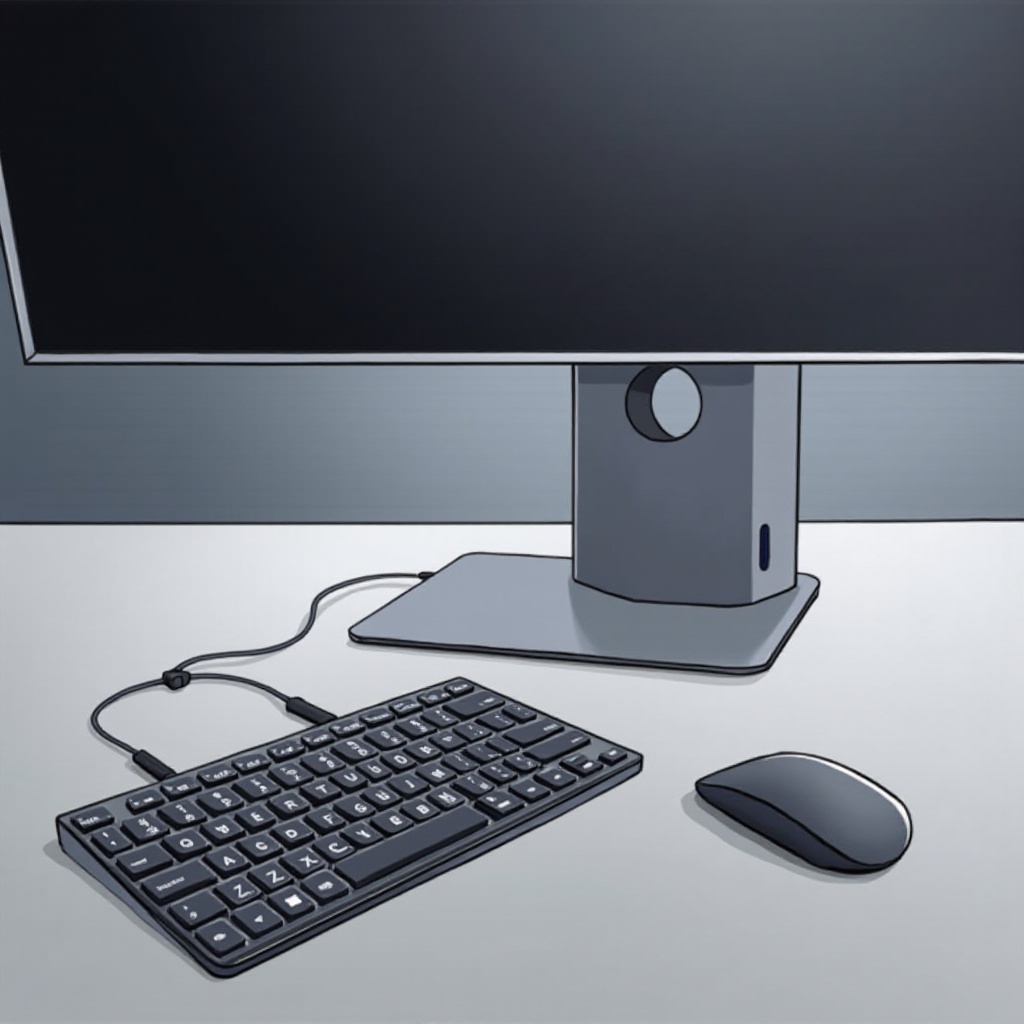Connecting your keyboard to your monitor can streamline and enhance your workspace setup, offering convenience and improved functionality. With evolving monitor technologies, direct connections are increasingly common, allowing for clutter-free environments.
Introduction
Connecting a keyboard directly to a monitor effectively maximizes desk space and simplifies your tech setup. Traditionally, keyboards connect via PCs, but monitors now offer direct options through advanced ports. Knowing these methods helps you create a more optimal workspace.

Understanding Keyboard and Monitor Types
Before embarking on your connection journey, identifying the types of keyboards and monitors at your disposal is crucial. This insight ensures compatibility and aids in selecting the best operational method.
Types of Keyboards: Keyboards typically are either wired or wireless, with USB and Bluetooth or RF methods respectively providing connectivity.
Types of Monitors: Monitors vary by input ports, ranging from USB-C to HDMI or VGA, influencing your connection approach.
With this foundational knowledge, you’re ready to explore the specifics of connecting keyboards to monitors.
Method 1: Connecting via USB-C Port
One of the simplest means of connecting keyboards is via a USB-C port, given its versatility and high data transfer rate. Many modern monitors include USB-C support, simplifying connection.
- Required Equipment: Confirm your keyboard has a USB or suitable adapter for USB-C compatibility.
- Step-by-Step Instructions:
- Connect your keyboard to the monitor’s USB-C port with the appropriate cable or adapter.
- Ensure the monitor is powered and connected to your PC.
- The system should automatically recognize the keyboard if properly connected.
- Troubleshooting Tips:
- If unresponsive, check for updates or proper driver installations.
- Test alternative cables or ports in case of hardware issues.
USB-C connections reduce workspace clutter and are highly recommended when supported.
Method 2: Using a USB Hub
For monitors lacking USB-C capabilities or older models, USB hubs can facilitate necessary connections between keyboards and monitors.
- Benefits of a USB Hub: It expands available ports for numerous devices, maintaining versatility and ease of use.
- Setup Process:
- Attach the USB hub to an available monitor port.
- Insert the keyboard into the hub.
- Ensure the hub receives power from an adapter or monitor.
- Common Issues:
- Connectivity complications? Confirm adequate power supply to the hub.
- Excessive power draw from multiple devices can impair functionality.
USB hubs support efficient bridging of peripherals, offering a practical solution for diverse setups.
Method 3: Wireless Keyboard Connections
For those seeking flexibility and fewer cables, wireless keyboards provide an ideal solution. Properly connecting them to monitors necessitates specific setups.
- Bluetooth Setup:
- Verify that your monitor can support Bluetooth.
- Turn on Bluetooth pairing mode on your keyboard.
- Access Bluetooth settings from the monitor or PC to initiate pairing.
- RF Dongle Usage:
- Plug the RF dongle into a USB port on the monitor or PC.
- Switch on the keyboard. Synchronization should occur if the keyboard and dongle are compatible.
- Connectivity Problems and Solutions:
- To prevent interference, position the keyboard and monitor to avoid signal obstruction.
- Battery issues might cause lag; ensure batteries are fresh for optimal performance.
Wireless connections excel in providing freedom of movement and minimizing cable management demands.

Advanced Connectivity Options
For users with specialized technical needs or multi-monitor environments, advanced techniques further optimize connectivity.
Utilizing Built-in USB Hubs: Many newer monitors come with integrated USB hubs, simplifying the connection directly without extra peripherals.
Using KVM Switches for Multi-Monitor Setups: KVM switches let one keyboard control different monitors or computers; an efficient choice for those managing extensive setups.
Each advanced method supports streamlined operations and maintains clean workspaces, integral for multitasking efficiency.

Best Practices for Seamless Connection
Smoother connectivity is achievable through preparation and convincing organization of your technological environment.
Compatibility Checks: Always verify that both hardware and software meet compatibility standards to mitigate possible connection issues.
Cable Management Tips: Employ solutions to tidy cabling, preventing tangling or disconnects, and enhancing the overall aesthetic of your work environment.
Implementing these best practices supports functionality and maintains a professional appearance.
Conclusion
Directly linking your keyboard to your monitor can revolutionize your desktop layout. From utilizing USB-C or relying on wireless tech, each method provides specific benefits tailored to your equipment and needs. Integrating these strategies ensures an efficient, clutter-free, and enhanced digital workspace.
Frequently Asked Questions
Can all keyboards be connected to monitors?
Not all keyboards can connect directly to monitors. It’s important to check compatibility with the available ports on your monitor.
What if my monitor has no USB ports?
If your monitor doesn’t have USB ports, connect your keyboard via the computer or use adapters that allow alternate point connections.
How do I resolve lag in wireless keyboard connections?
Ensure there is minimal interference, keep pathways clear between devices, and replace or recharge the keyboard’s batteries regularly.
